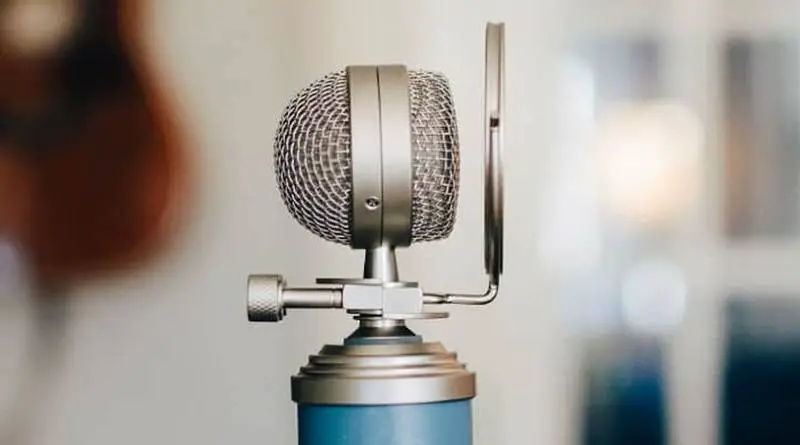
Guide to Condenser Microphones: Why use them and reviews of the best ones that can improve your music recordings.
Introduction Why Use Condenser Mics?
When it comes to recording microphones, there are various types that exist, each with their strengths and suitable for a particular purpose.
If you’re looking for a microphone to record lots of high frequencies, you need to use one of these.
Use these to record quieter instruments (that has lots of high frequency content) such as piano, acoustic guitar, and works best for vocals.
A condenser microphone is extremely responsive and more suited for studio purposes (dynamic microphones are usually better for live performances)
Condenser Microphones (aka capacitor mics) are far more sensitive than dynamic mics, especially at higher frequencies.
You also get models which can record very low frequencies, a feature known as ‘extended low-frequency response’.
You can use it to record the following:
- Vocals
- Piano, Acoustic guitar, Electric guitar (not very close to the amp)
- Mandolin, Accordion, Banjo, Ukulele
- Violin/Viola/Fiddle, Cello, Saxophone
- Drum overheads
Comparison Chart
Best Condenser Microphones
Best Condenser Microphones
Recommended Condenser Microphones
Rode NT1-A Studio Vocal Condenser Microphone
The NT1-A is one of the world’s quietest microphones — ideal for vocals, voice-over, and to record acoustic instruments. Use it for recording vocals, guitar, piano and other instruments. It works well with most applications. This is a favorite with serious musicians to record killer vocals, this large-diaphragm condenser mic has super-low noise and a great frequency response.
- Pros: Incredible dynamic range, Versatile, No noise
- Cons: Bit heavy
- Uses: Home studio. Amateur recording. Professional recording
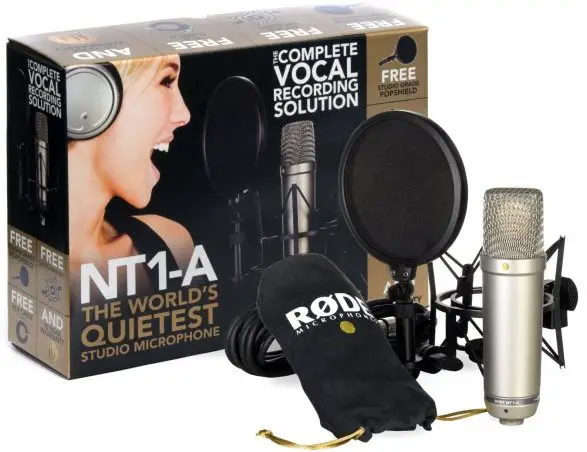
The Rode NT series mics are one of the few (decently priced) microphone series that can match up to the big boys with their warm and lush condenser sound. This mic, in particular, is very popular among those with home and project studios.
The NT1 delivers audio remarkably well over all frequencies- bass as well as the high frequencies. Although its a great vocal mic (you actually don’t have to boost anything), it also records acoustic guitar quite well. However, if you plan to record lot of drums, you should consider using the Shure mics.
The NT1 is great for home studios. It has got rugged casing. It’s cardioid (records clearly only from one direction). It works well hanging upside down, can be hand-held (just don’t move your fingers).
It takes a 3 prong XLR cable (like any pro mic). This does not come with a power supply (your board must have phantom power to use this mic). It works well with most mixers and does not require you to crank the preamp in order to get a strong usable signal.
Rode NT-USB USB Condenser Microphone
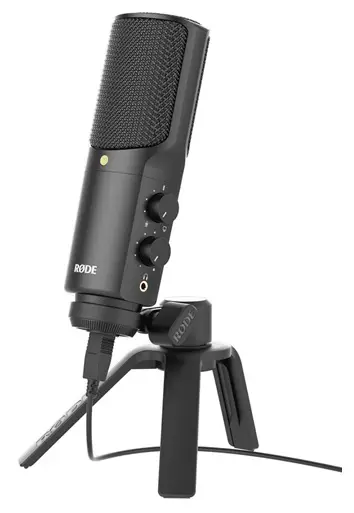 The Rode NT-USB is a versatile microphone that can be used for sound recording, podcasts, or voice-over recording. It plugs easily into a PC, Mac or iPad and you can start recording right away. It includes a stand, pop filter, and a headphone output for zero-latency monitoring. You can conveniently place it on a tripod and it has easily accessible knobs to control volume. Includes 6m USB cable (20’).
The Rode NT-USB is a versatile microphone that can be used for sound recording, podcasts, or voice-over recording. It plugs easily into a PC, Mac or iPad and you can start recording right away. It includes a stand, pop filter, and a headphone output for zero-latency monitoring. You can conveniently place it on a tripod and it has easily accessible knobs to control volume. Includes 6m USB cable (20’).
- PROS: on-board mix controls.
- CONS: Included tripod is very small. Does not come with an XLR port
The Rode NT-USB is one of the best USB mics that you can get your hands on, in the under $200 range. It is a versatile side-address microphone that is ideal for recording musical performances in addition to spoken applications such as podcasting and voice-over.
AKG P220 Vocal Condenser Microphone
The AKG P220 is a large-diaphragm condenser mic suitable for use in pro studio, recording at home, or mixing front of house. Features cardioid pickup pattern that blocks unwanted sounds from the sides, is ruggedly built yet sensitive and accurate. It comes with an aluminum carrying case and spider shock mount.
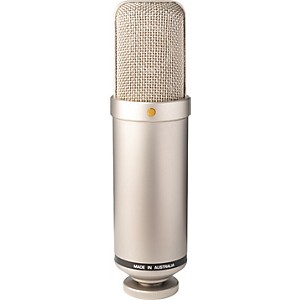
Rode NTK Tube Condenser Microphone
The Rode NTK Tube Condenser Microphone is used by several industry professionals, captures warm, clear cut sound, records what’s in front of it and nothing else. Gold plated diaphragm, includes dedicated power supply. You’ll need to buy a shock mount and other accessories for it, but there’s no doubt the Rode NTK is one of the best condenser mics in business.
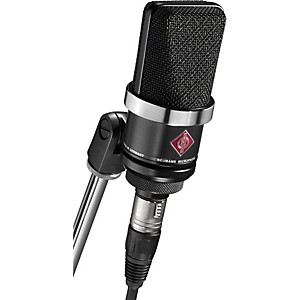
Neumann TLM 102 Condenser Microphone, Cardioid
Neumann mics are among the best in business, on par with the Rode mics out there. The TLM-102 is one of the cheaper models in that series. A huge sound pressure level to 144 dB, a super clean diaphragm, its suitable for the serious musician. Available in silver or matte black.
Condenser Mics: Buying Guide
Impact of Diaphragms
The size of the diaphragm is an important feature that you need to consider when selecting a condenser microphone.
- Large-diaphragm mics
These are most suitable for recording vocals, as they can add warmth to a sound. You will still need to use a pop shield, to tone down the ‘P’ and ‘SH’ sounds. - Small-diaphragm mics
These provide a wide and even frequency response when recording, and are often long and thin in shape. Small diaphragm also leads to good transient response, which makes them suitable to record piano, acoustic guitars and other soft musical instruments.
Phantom Power
Condenser microphones need Phantom power to function. It’s a power signal of +48 Volts that is sent to the microphone, usually from the mixing desk.
Most PA systems have phantom power built-in, most audio-interfaces also come with this feature (some of these mics can also be powered using an internal battery source).
If you have a phantom power switch on a mixer, usually that is a global phantom power that applies to all the mic preamps on all the channels (mixers with individual pre-amps and discrete phantom power capabilities per channel tend to be much more expensive).
In case you are working in a setup without phantom power, you’ll need to invest in a mic preamp with phantom power capability.
Remember, phantom power is a requirement for condenser microphones, but it may not be suitable for some other kind; it will most probably blow up ribbon microphones, so it’s either all or nothing for each channel.
Proximity Effect
As with most recording microphones, you need to be aware of the ‘proximity effect’, where the lower bass frequencies become louder as the sound source moves closer to the microphone; it can ruin your recording.
Buying Options
Here are some popular Condenser Mics that are also affordable:
Condenser Mics by Audio-Technica, Shure, & Rodes are quite popular.
High-end professional studios prefer to use condenser microphones that are made by Neumann, especially the U47 and U67 models.
Here’s a video that shows how a Condenser Microphone works
KeytarHQ editorial team includes musicians who write and review products for pianists, keyboardists, guitarists & other musicians. KeytarHQ is the best online resource for information on keyboards, pianos, synths, keytars, guitars and music gear for musicians of all abilities, ages and interests.



Leave a Reply